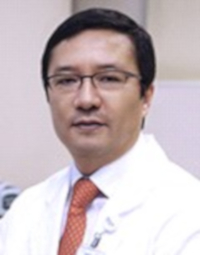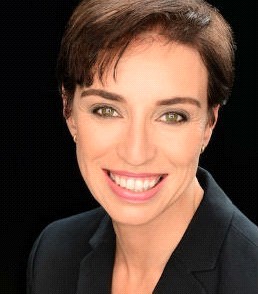Interview with Professor Young Tae Kim, Professor and Chair of the Department of Thoracic and Cardiovascular Surgery, Seoul National University Hospital, South Korea

Professor Young Tae Kim graduated from Seoul National University College of Medicine and trained at Seoul National University Hospital Cardiovascular Surgical Residency Program, before taking an Advanced General Thoracic Surgical Fellowship at the Mayo Clinic, Rochester, MN, USA.
He is an active member of the American Association for Thoracic Surgery (AATS), the Society of Thoracic Surgeons (STS) and the International Association for the Study of Lung Cancer (IASLC). Professor Kim’s clinical practice and research interests are focused on the surgical technique of lung cancer and genomic studies of thoracic malignancies.
What first motivated you to work in thoracic surgery and lung cancer?
I suppose the decision to work in thoracic surgery, and lung cancer specifically, was a matter of personal preference. I was initially interested in cardiac surgery as it is a reconstructive surgery but on the other hand, I did not want to give up my interest in oncology, so I chose thoracic surgery focused on lung cancer.
What is different about your role today from when you started your career?
A lot has changed with the availability of new treatments and technologies. In the past, there were only a few chemotherapy treatments available and radiation treatment was not well established. The only available curative treatment for early-stage lung cancer was surgery, while a late-stage diagnosis was effectively a death sentence for many patients.
Today things have improved. We have better diagnostics for tracking cancer in the early stages. For advanced stage patients, we have targeted therapies as well as immunotherapies, which have transformed lung cancer survivorship a great deal. These advances have changed the role of the surgeon quite significantly.
What have been the biggest advances in thoracic surgery?
The most significant advance in thoracic surgery has been in the technology. Minimally invasive surgery has been a real step forward. We are now seeing video-assisted and robot-assisted surgical procedures as a standard surgical practice for lung cancer.
Also, the lung cancer screening program has resulted in an increased number of early diagnosed cases, and recently, we are seeing more candidates for surgical resections. All together, these advances provide the best chance of a cure to lung cancer patients.
Multidisciplinary team practice is another adance. As surgeons, we are also working more closely with both radiation oncologists and medical oncologists. For example, we might work with our colleagues to shrink a tumour to make it easier to remove with surgery or to provide treatment after surgery to eliminate any last cancer cells and reduce the risk of cancer recurring.
What do these advances mean for people with lung cancer?
For the first time, there is now a real chance of patients being cured of lung cancer with early diagnosis and advanced treatment. However, treatment pathways have become much more complicated than in the past. Patients are faced with many different routes to treatment, from traditional therapy to various clinical trials including new drugs.
While treatment is more complicated than before, it is also more effective and there is more hope of survival than ever. But the patients may need increased support throughout their cancer journey.
What do you see as the most significant challenges in your field?
In my opinion, there are three major challenges facing lung cancer treatment. Firstly, treatment is expensive and paying for advanced approaches to diagnosis and treatment can be challenging: screening, targeted therapies, immunotherapy, personalized medicine – these are all very expensive and the financial burden can be significant.
Secondly, there is still more that we need to do concerning smoking cessation so that we continue to drive down the number of cases of lung cancer associated with smoking. We have to also bear in mind that e-cigarettes may yet create new lung-related issues in the future.
And thirdly, the incidence of non-smoking patients continues to rise. This has the potential to pose a significant challenge in the future as the genetic profile of the tumours from patients who have never smoked is significantly different from those of smokers.
What are you most excited about in your field?
Genomics offers exciting possibilities for lung cancer treatment. I have been participating in the development of sophisticated gene panel tests for lung cancer, through which we can choose appropriate target agents by detecting mutations in the ALK, EGFR and ROS1 genes, for example.
As a surgeon, a priority for me is educating the next generation of surgeons. Teaching young surgeons is both fun and deeply rewarding. I believe that the development of an effective education program in lung cancer treatment is the key point to develop in the future.
What role do you see international collaboration playing in advances in lung cancer treatment?
International collaboration has been very productive in lung cancer. For instance, the IASLC staging committee, on which I have served for some time, has been vital for improving cancer staging systems.
I believe that international collaboration represents an important opportunity for education too. As clinicians from different nations and disciplines, we all have a lot to learn from each other and I believe we can achieve our goal through IASLC.
Dr Emily Stone, Consultant Respiratory Physician and Acting Head of Thoracic Medicine, Department of Lung Transplantation and Thoracic Medicine, St Vincent’s Hospital, Sydney

Dr Stone is a Senior Lecturer at the University of New South Wales and the Chair of the St Vincent’s Hospital Lung Cancer Multidisciplinary Team (MDT). She has developed clinical practice and research interests in the fields of lung cancer, multidisciplinary team care and tobacco control since 2006.
She has been a member of the IASLC Tobacco Control and Smoking Cessation Committee since 2013 and is currently Chair of the Committee.
What first motivated you to work in thoracic medicine and lung cancer?
What first drew me to thoracic medicine was its intellectual offering. I focused on lung cancer in my early years of clinical practice: I worked with the lung cancer multidisciplinary team (MDT) and loved the collegiate atmosphere.
I find lung cancer a very rewarding field to work in. There is a crying need for patients with lung cancer to be cared for by people who believe they need respect and the best care, including support with smoking cessation.
I used to feel despairing about smokers with lung cancer. Being on the IASLC Tobacco Control Committee – where I have the opportunity to work with exceptional people (I know everybody says their teams are exceptional, but these people really are) – has educated me and made me a better clinician.
What is different about your role today from when you started your career?
There is much more to offer patients now, due to advances across the spectrum of treatment and care. Advances in imaging, the wider use of PET scans and the introduction of EBUS (endobronchial ultrasound-guided biopsy) mean that our ‘diagnostic toolkit’ is much more sophisticated than it once was, so we can better diagnose lung cancer and identify staging.
Use of low-dose CT raises the potential of larger scale screening programmes for lung cancer. I’m presently involved in a trial looking at this.
The development of MDT teams and lung cancer pathways has also been very important. Developing well-validated lung cancer pathways can make a huge difference to advancing care and improving outcomes.
Now a whole team of people, from the GP through to the respiratory physicians, oncologists, surgeons, palliative care physicians, lung cancer nurses and allied health care workers can collaborate to provide the best care for each patient. MDT teams also include imaging specialists and pathologists. There is a lot of expertise that comes together.
With some of the newer therapies including targeted therapies and immunotherapies we are seeing more patients living good quality lives after diagnosis. It is not uncommon now to see people with lung cancer who are active and busy, even after their diagnosis.
I often hear about how patients are able to travel or enjoy playing golf, which once seemed unthinkable. This is not true for everyone, but it seems to be happening more often. Maybe we can turn lung cancer into a more chronic condition.
What do you see as the most significant challenges for advocates?
Lung cancer in non-smokers is very tricky to diagnose early and given that around 15% of lung cancer cases occur in non-smokers we still need to improve early detection.
We will also need to keep driving down smoking levels. There have been big steps on tobacco control. During my medical career smoking rates have halved. We are looking at about 12% in Australia at the moment, but we want to see that pushed down to around 5% in the future, which will be difficult. The use of e-cigarettes also poses a new challenge to our existing models of tobacco control.
In many ways, survivorship is an unexplored field in lung cancer. But there are more and more patients diagnosed at stage IV who are living well. Pathways for survivorship care are well established in other fields, like breast cancer. More work needs to be done on helping patients with lung cancer cope with diagnosis and supporting them to live well on active treatment.
What are you most excited about in your field?
I think developments in the use of biomarkers and genomics have a lot to offer. We have seen the impact on treatment options from markers such as EGFR receptor mutation and EML4-ALK gene rearrangement. I look forward to future markers that may help refine treatments even more, with better outcomes for patients.
What role do you see international collaboration playing in advances in lung cancer treatment?
International collaboration is essential. Different nations and groups have different expertise and working together has been critical in improving lung cancer treatment. For example, some of the high-impact early phase III EGFR TKI trials were carried out across several countries in Asia because the rates of gene mutation are particularly high there.
Tobacco control has to be an international effort because the tobacco industry itself is globalized.
International guidelines, such as those developed by IASLC, are also very important as they often reflect more recent information and clinical trial data and help us optimize the choices for patients.


